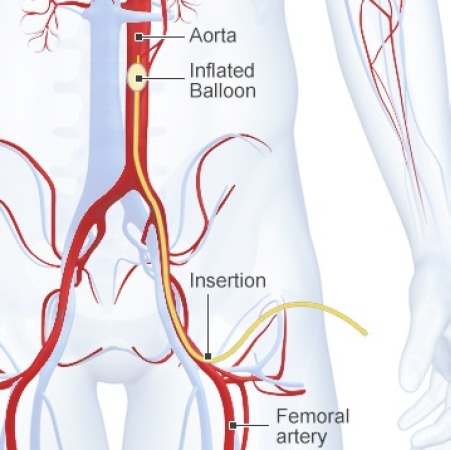
This week we will discuss #Ventilation during #Resuscitation. As a starter, we’d like to hear from you.
In your practice, which of the following ventilation parameters do you routinely measure during resuscitation?
@ERC_resus #ResusciTuesdays #ResusTwitter #CPR #ALS
In your practice, which of the following ventilation parameters do you routinely measure during resuscitation?
@ERC_resus #ResusciTuesdays #ResusTwitter #CPR #ALS
Thanks a lot for all your answers.
Let’s reveal the right answer (and more) through this thread with this interesting information brought by @johannes_wittig
Let’s reveal the right answer (and more) through this thread with this interesting information brought by @johannes_wittig
An incomplete story of excessive ventilation during #CPR…
In 2004, Aufderheide et al. investigated the harmful dimensions of ventilation during CPR. #OHCA CPR attempts of 13 adults were observed; .. (1)..
In 2004, Aufderheide et al. investigated the harmful dimensions of ventilation during CPR. #OHCA CPR attempts of 13 adults were observed; .. (1)..
average ventilation frequency was 30 breaths/minute. Ventilation frequencies remained high after retraining. No patient survived.
2 pig study protocols followed using a pressure controlled, semiautomatic ventilator (constant flow rate of 160 L/min) .. (2)..
2 pig study protocols followed using a pressure controlled, semiautomatic ventilator (constant flow rate of 160 L/min) .. (2)..
and invasive hemodynamic/ventilation monitoring.
- hemodynamic protocol (n=9): cross-over in random sequence 12, 20, 30 breaths/minute during asynchronous CPR; 3 pigs achieved #ROSC*, increased ventilation frequency was associated with significant increase in pH, ..(3)..
- hemodynamic protocol (n=9): cross-over in random sequence 12, 20, 30 breaths/minute during asynchronous CPR; 3 pigs achieved #ROSC*, increased ventilation frequency was associated with significant increase in pH, ..(3)..
intrathoracic pressure and decrease in coronary perfusion pressure
- survival protocol (n=21): randomisation to either 12,30,30 (+5% inspiratory CO2) breaths/minute during asynchronous CPR; 6/7 pigs ventilated with 12 breaths/minute survived compared to 1/7 ..(4)..
- survival protocol (n=21): randomisation to either 12,30,30 (+5% inspiratory CO2) breaths/minute during asynchronous CPR; 6/7 pigs ventilated with 12 breaths/minute survived compared to 1/7 ..(4)..
in both 30 breaths/min group
The authors concluded that rescuers hyperventilate OHCA patients and that high ventilation frequencies have a detrimental impact on hemodynamics during CPR and survival. [1]
This new knowledge was quickly incorporated into the 2005 @ERC_resus ..(5)..
The authors concluded that rescuers hyperventilate OHCA patients and that high ventilation frequencies have a detrimental impact on hemodynamics during CPR and survival. [1]
This new knowledge was quickly incorporated into the 2005 @ERC_resus ..(5)..
#BLS and #ALS guidelines, which recommended to avoid hyperventilation. [2,3]
It should be considered that the tidal volumes applied during this study approached 2.7 L. This can be derived from the ventilation devices constant flow rate and inspiratory time. [4] ..(6)..
It should be considered that the tidal volumes applied during this study approached 2.7 L. This can be derived from the ventilation devices constant flow rate and inspiratory time. [4] ..(6)..
In 2006 O’Neill et al. conducted a study, observing ventilation parameters (including respiratory rate and tidal volume) during adult CPR in an emergency department. 12 patients were included, median respiratory rate was 21, median tidal volume 619 mL. ..(7)..
No patient survived. They concluded that hyperventilation was common and was caused by high ventilation frequencies rather than tidal volumes. Also, they observed persistently high airway pressure and speculated on its detrimental impact on hemodynamics. [5] ..(8)..
In 2011 Gazmuri et al. investigated the impact of hyperventilation when different ventilation frequency/ tidal volume combinations were applied. 16 pigs were randomly assigned to 4 different intervention groups of 4 pigs each. Each group received a different ..(9)..
frequency (breath/min) + volume (ml/kg) combination: 10 + 6; 10 + 18; 33 + 6; 33 + 18. Hemodynamic and ventilation measurements were recorded. 13/16 pigs survived, ventilation combination and outcome were not associated; hemodynamics were not adversely impacted. [6] ..(10)..
In 2017 Vissers et al. published a systematic review to investigate whether the recommended ventilation rate of 10 breaths/minute compared to any other ventilation rate had a beneficial impact on outcomes (when an ETT** was in place during CPR). They found that the weak ..(11)..
recommendation of 10 breaths/min during CPR was based on very low-quality evidence. [7]
The current ERC guidelines state: ‘Once an ETT or an SGA*** has been inserted, ventilate the lungs at a rate of 10 min-1 and continue chest compressions without pausing ..(12)..
The current ERC guidelines state: ‘Once an ETT or an SGA*** has been inserted, ventilate the lungs at a rate of 10 min-1 and continue chest compressions without pausing ..(12)..
during ventilations (expert opinion).’ [8]
This thread will surely lead to more questions about (hyper)ventilation during CPR than it answers. More discussion and research are needed. ..(13)..
This thread will surely lead to more questions about (hyper)ventilation during CPR than it answers. More discussion and research are needed. ..(13)..
Let us know what you think about ventilation during CPR, key papers you like to see discussed and misconceptions you would like to debunk.
*ROSC: return of spontaneous circulation
**ETT: endotracheal tube
**SGA: supraglottic airway
Thank you @johannes_wittig ✌🏼
..(14)..
*ROSC: return of spontaneous circulation
**ETT: endotracheal tube
**SGA: supraglottic airway
Thank you @johannes_wittig ✌🏼
..(14)..
Literature links:
[1] doi.org/10.1161/01.CIR…
[2] doi.org/10.1016/j.resu…
[3] doi.org/10.1016/j.resu…
[4] doi.org/10.1016/j.resu…
[5] doi.org/10.1016/j.resu…
[6] doi.org/10.1016/j.resu…
[7] doi.org/10.1016/j.resu…
[8] doi.org/10.1016/j.resu…
..(15)..
<<END OF THREAD>>
[1] doi.org/10.1161/01.CIR…
[2] doi.org/10.1016/j.resu…
[3] doi.org/10.1016/j.resu…
[4] doi.org/10.1016/j.resu…
[5] doi.org/10.1016/j.resu…
[6] doi.org/10.1016/j.resu…
[7] doi.org/10.1016/j.resu…
[8] doi.org/10.1016/j.resu…
..(15)..
<<END OF THREAD>>
• • •
Missing some Tweet in this thread? You can try to
force a refresh









